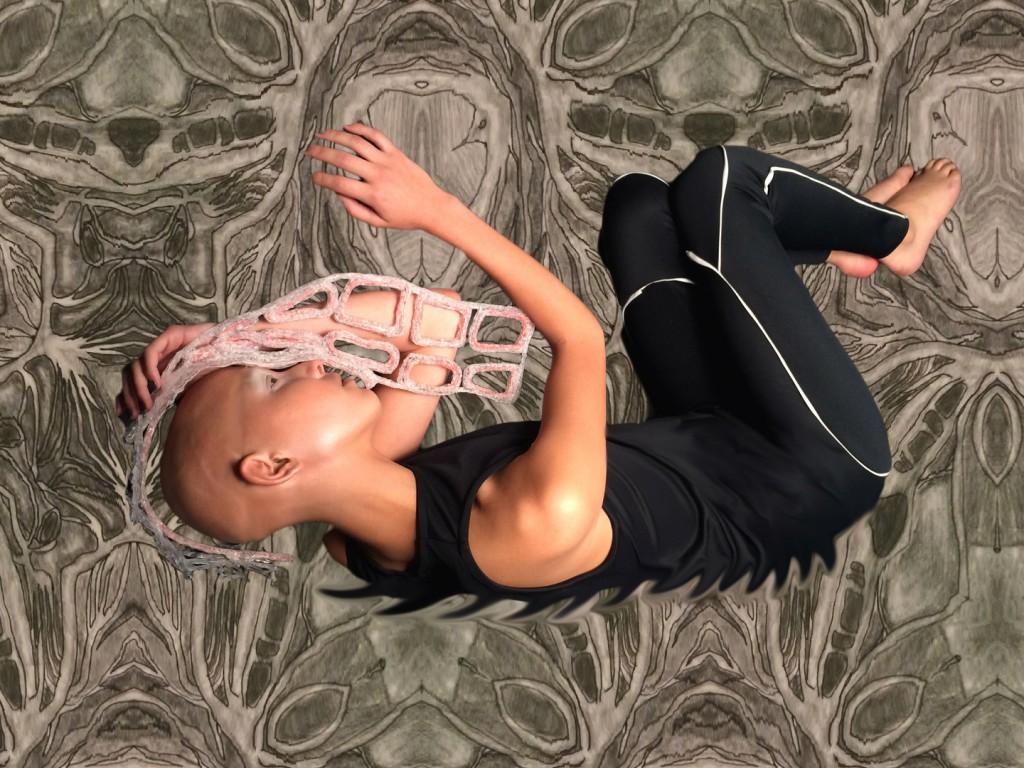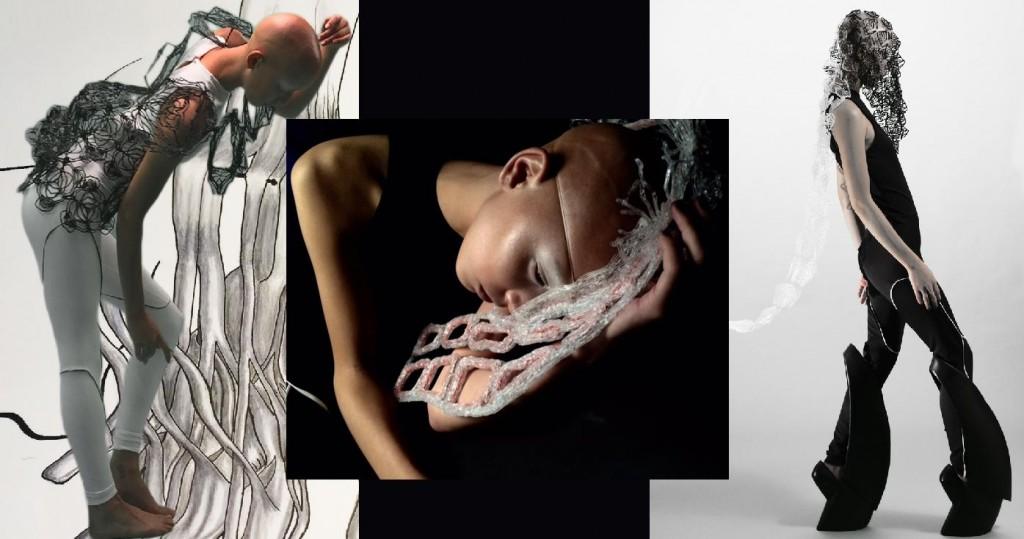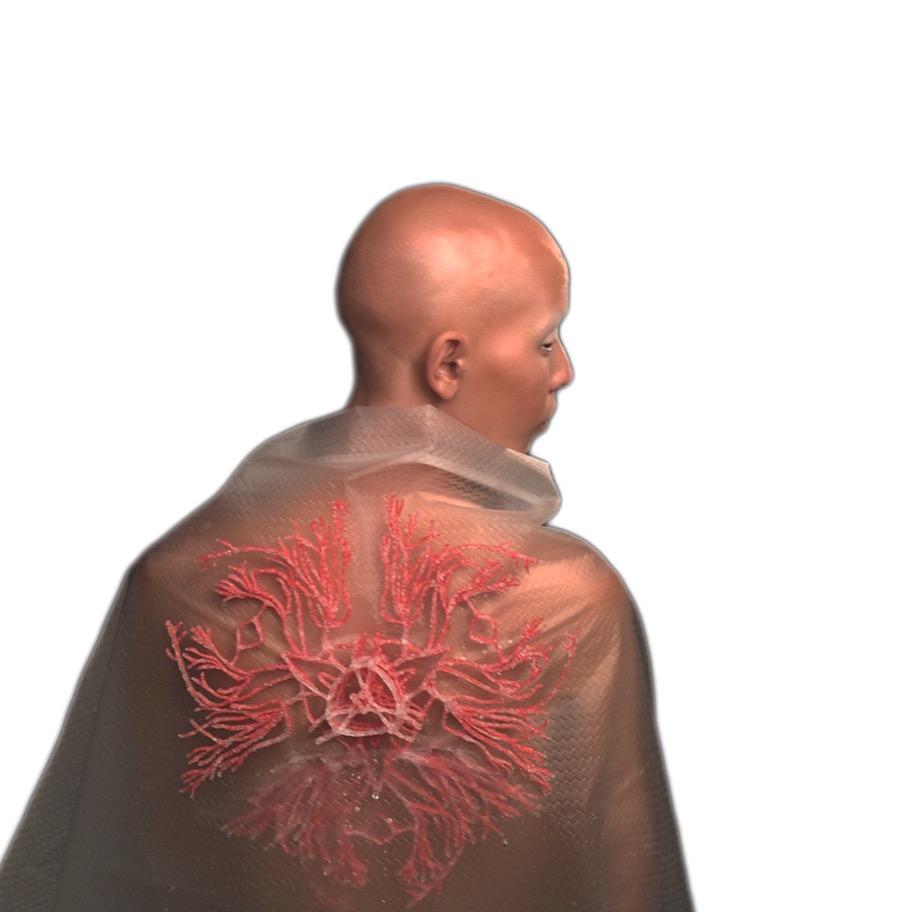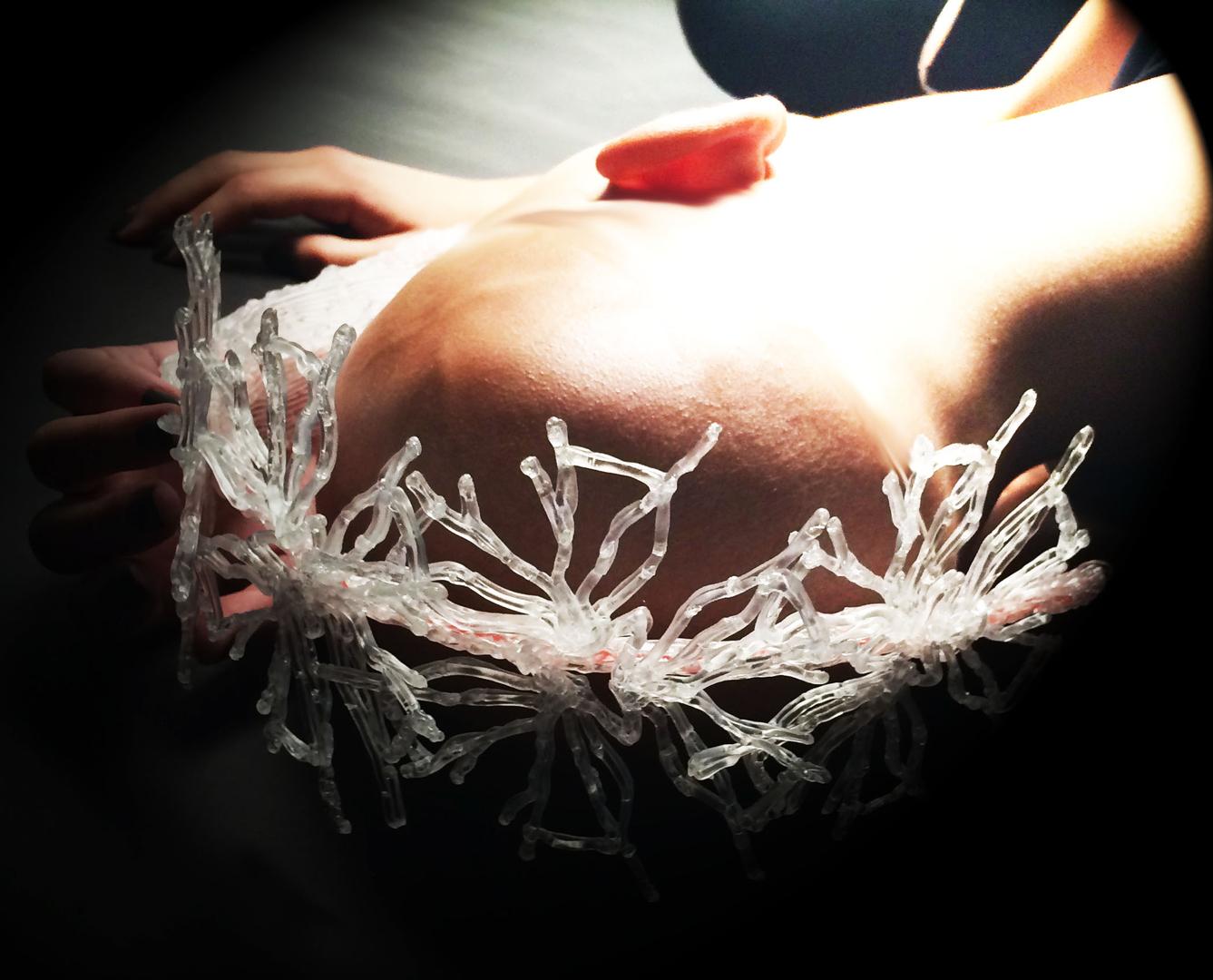 Over the last year or so, there have been a plethora of fashion designers dabbling with 3D printing technology. While 3D printing provides for unique details and innovative designs which we have not seen in the past, the comfort level exuded in these designs still remains an obstacle. For one artist, designer, and perhaps you could consider her a bit of a philosopher, 3D printing has become a way for her to express herself and her innermost feelings toward the human body.
Over the last year or so, there have been a plethora of fashion designers dabbling with 3D printing technology. While 3D printing provides for unique details and innovative designs which we have not seen in the past, the comfort level exuded in these designs still remains an obstacle. For one artist, designer, and perhaps you could consider her a bit of a philosopher, 3D printing has become a way for her to express herself and her innermost feelings toward the human body.
Adriana Restrepo isn’t like your typical designer, and certainly isn’t using 3D printing in the same way that other fashion designers have in the recent past. Instead of delegating a computer and a machine to do the 3D printing for her, she prefers to take the bull by the horns and use her own creative power to fabricate her designs.
Restrepo’s bull in this case is the 3D printer, and that printer is not your typical robotic machine. It instead is a 3Doodler 3D printing pen, and like an artist using a paintbrush on canvas, Restrepo uses it on the human body.
As part of a project, titled Brainocytes, where Restrepo questions the correlation between humans and technology in fashion, as well as what can happen when technology is challenged through craftmanship (or craftwomanship) and analog thinking, she came up with quite the fashion statement. A fashion statement that originated from the idea of speculative design, stating that “once designers step away from industrial production and the marketplace, we enter the realm of the unreal, the fictional.” (Dunne and Raby, 2014).
She aimed to find a place in her work where “interrogative design” starts a debate around the process of creating things, as well as its relevance for final outcomes.
“To speculate what digital sickness could possibly look like, I started drawing from medical illustration books, going back to organic forms and human biology,” Restrepo tells 3DPrint.com. “I then modified the drawings using computer software, thus joining the organic with the digital, and creating extrapolating images that, in my post-human imagination, [fit] the concept.”
Using modified photos as templates for making her objects, Restrepo used her 3Doodler pen to begin fabricating her designs.
“I thus became both the computer and the printer, in an analog, visceral way,” she told us. “The objects were joined together in a way they would look like pieces that were emerging from the body, or that resembled a replacement skin.”
Her designs were all handmade, and she believes that she was able to accomplish much more than what would have ever been possible if she were to use a more conventional 3D printer to do her work. Her designs resemble nerves and limbs of the human body, but also encompass objects which are alien to the body.
“My interpretation of the concept of digital sickness was that of an invisible invasion that the body rejected and forced out; the contamination from inorganic causes in the flesh, an immune response to unknown invaders,” explained Restrepo.
Her interpretation could be left up for debate, but as an artist, it provides for a ground to stand on in the creation of her work. This certainly isn’t your typical art or fashion, but then again, Restrepo certainly doesn’t come off as your typical designer — perhaps more of a philosopher.
Her philosophy is that when we are in the process of making things, we still maintain the capabilities of deciding if we want to follow convention and do things the way everyone else does, or if we wish to defy convention and do things differently. In her work, Restrepo aims to seek a balance between technological progress, practice-based research, and craftsmanship, and in turn demonstrate how human input is critical for problem solving when creating things.
“My interpretation of the concept of digital sickness was that of an invisible invasion that the body rejected and forced out; the contamination from inorganic causes in the flesh, an immune response to unknown invaders,” said Restrepo.
Whether you agree with Restrepo’s synopsis or not, you must admit that her creative thinking is unmatched, and her design ability is one-of-a-kind. What do you think about Adriana Restrepo’s 3Doodler’ed fashion designs? Discuss in the 3Doodler fashion forum thread on 3DPB.com. Check out some more photos below.
Subscribe to Our Email Newsletter
Stay up-to-date on all the latest news from the 3D printing industry and receive information and offers from third party vendors.
Print Services
Upload your 3D Models and get them printed quickly and efficiently.
You May Also Like
Reinventing Reindustrialization: Why NAVWAR Project Manager Spencer Koroly Invented a Made-in-America 3D Printer
It has become virtually impossible to regularly follow additive manufacturing (AM) industry news and not stumble across the term “defense industrial base” (DIB), a concept encompassing all the many diverse...
Inside The Barnes Global Advisors’ Vision for a Stronger AM Ecosystem
As additive manufacturing (AM) continues to revolutionize the industrial landscape, Pittsburgh-based consultancy The Barnes Global Advisors (TBGA) is helping shape what that future looks like. As the largest independent AM...
Ruggedized: How USMC Innovation Officer Matt Pine Navigates 3D Printing in the Military
Disclaimer: Matt Pine’s views are not the views of the Department of Defense nor the U.S. Marine Corps Throughout this decade thus far, the military’s adoption of additive manufacturing (AM)...
U.S. Congress Calls Out 3D Printing in Proposal for Commercial Reserve Manufacturing Network
Last week, the U.S. House of Representatives’ Appropriations Committee moved the FY 2026 defense bill forward to the House floor. Included in the legislation is a $131 million proposal for...






































